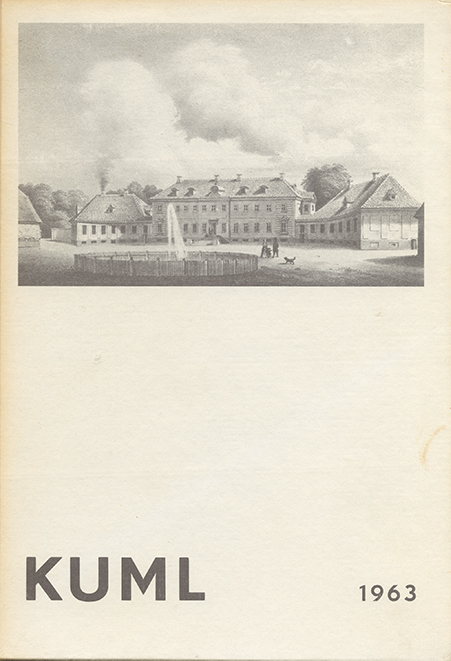Moesgård
DOI:
https://doi.org/10.7146/kuml.v13i13.103994Keywords:
Forhistorisk museum moving to Moesgaard, Forhistorisk museum flytter til moesgårdAbstract
Moesgaard
With its taking over of Moesgaard, south of Aarhus, the Forhistorisk Museum has taken the first step in a comprehensive programme already proposed by Professor P. V. Glob in 1950. As the Jutland Archeological Society will also find a place here it is reasonable that KUML introduces its readers to its new home.
The main building was erected in the 1780s by the architect Zuber, who was a pupil of Jardin, and the grounds, including perhaps the first Romantic garden in Denmark, carry on the Neoclassical lines of the building in allees and clearings stretching all the way to the sea.
The whole of the main building will go to house the growing staff of technicians and research workers, while the side buildings to the south will be occupied by the conservation department, lecture and store rooms and the hall for special exhibitions. The north wing will be extended to house the permanent display galleries.
The 250 acres of park, woodland and seashore will give room for the establishment of an open-air museum where prehistoric cultures can be illustrated from other sides than are possible in exhibition galleries. Here ancient monuments condemned to destruction by the construction of roads and the spread of towns can be reerected, some in a special "monument park", but others in natural association with experimental reconstructions of prehistoric houses, fields, leaf-pasturage, smithies and the like. The ecology of the various prehistoric periods will be reproduced in limited portions of the woods and of the adjacent fields, and there archeologists will be able to try out their theories in practice.
These will include reconstruction of houses and farms, from the flimsy huts of the StoneAge hunters to the stave-built longhouses and small pit-dwellings of the Viking Period. Agriculture and stock-raising of various types and periods will also be taken up on an experimental basis. The results of these experiments cannot be forecast in advance, but the experiments with slash-and-burn cultivation in Draved Wood, and of iron smelting at Drengsted and Varde Steelworks show how fruitful cooperation between archeologists, natural scientists and technicians can be.
Thus by following the woodland paths around Moesgaard the visitor will be able to wander through Denmark's prehistory, and experience something of the milieu which prehistoric man formed though the millennia of Denmark's oldest history.Downloads
Published
How to Cite
Issue
Section
License
Fra og med årgang 2022 er artikler udgivet i Kuml med en licens fra Creative Commons (CC BY-NC-SA 4.0).
Alle tidligere årgange af tidsskriftet er ikke udgivet med en licens fra Creative Commons.


